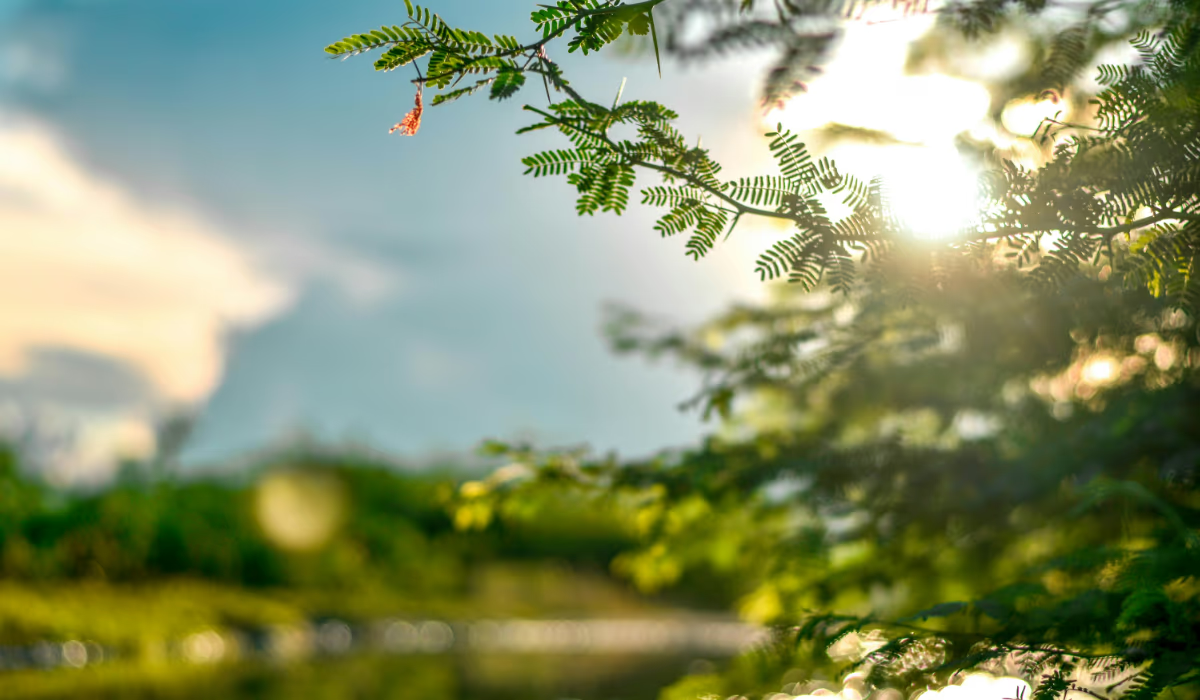Many gardeners are surprised when a thriving plant suddenly develops scorched or pale leaves. While sunlight is essential for growth, too much direct exposure can overwhelm a plant’s natural defenses. Not every species tolerates full sun, and even sun-loving plants can suffer under extreme heat and bright midday rays. Recognizing the early signs of stress helps prevent permanent damage and allows your plants to recover more quickly.
Signs That a Plant Is Receiving Excessive Sun
The most common sign of too much sun is leaf scorching, where the edges or surfaces become brown, brittle, or appear bleached. Yellowing or fading of green pigments may occur when strong sunlight breaks down chlorophyll, often starting on the top or sun-facing leaves while shaded leaves remain unaffected. Plants that wilt or droop despite having adequate soil moisture may also be struggling with sun stress. Another clue is leaf curling, where foliage folds inward to reduce exposure. Over time, growth may slow down, and flowers or fruit production may decrease as the plant diverts energy into survival.
What Causes Sun Damage in Plants?
Sun damage usually happens when light intensity and heat exceed what the plant can tolerate. A sudden change in conditions, such as moving a plant from shade into full sun without acclimation, can shock the plant. High temperatures combined with intense sunlight intensify the stress, particularly if the soil is dry and roots cannot supply enough water to cool the leaves. Plants adapted to shaded environments are more vulnerable because their leaves lack protective pigments and structural adaptations to withstand direct rays. Even sun-tolerant varieties can burn if conditions are harsher than normal.
How to Prevent and Mitigate Sun Damage
The best way to protect plants is to adjust their exposure gradually. Plants transitioning from indoors or shaded areas should be introduced to brighter conditions step by step. Providing partial shade during the hottest part of the day, especially in summer, reduces the risk of leaf burn. Consistent watering is also critical, as hydrated plants are better able to withstand stress. Mulching helps keep soil cooler and retains moisture around the roots. Choosing plant varieties suited to your climate and light levels ensures fewer problems, while damaged foliage should be trimmed only if severely affected so the plant can conserve energy.
What to Do When You Suspect Overexposure
When you notice signs of sun stress, try moving potted plants to a shadier location or give in-ground plants temporary shade using fabric, taller companions, or garden structures. Water deeply to keep roots supplied, but avoid overwatering, which can add additional stress. Observe the new growth to see if it appears healthier, as old damaged leaves will not recover but can be replaced with fresh foliage. Delay fertilizing until the plant regains strength, since nutrient applications can burden an already stressed system.
Conclusion
Too much sun can harm even the healthiest plants, leading to scorched leaves, discoloration, and stunted growth. By understanding the signs of sun stress, adjusting exposure gradually, and providing consistent care, you can protect your garden and help plants recover from sunburn. Balanced light, adequate water, and proper placement are the keys to keeping plants thriving even in bright conditions.
FAQs
How do I know if sunlight is the cause of damage?
If damage is concentrated on the sun-facing side of the plant and shows as bleaching or scorch marks, it is likely due to excessive sun rather than disease or nutrient problems.
Do all plants suffer from too much sun?
No, some plants are adapted to full sun and thrive in it, but shade-loving species or plants exposed too suddenly often suffer.
Can sunburned leaves heal?
Damaged leaves cannot repair themselves, but with better conditions, the plant will grow new healthy foliage.
Should I cut off the damaged leaves?
Remove only the most severely affected leaves. Keeping some foliage helps the plant produce energy during recovery.
Is it safer to give less sun than too much?
Yes, plants generally adapt more easily to lower light levels, while excessive sun can cause quick and irreversible damage.







